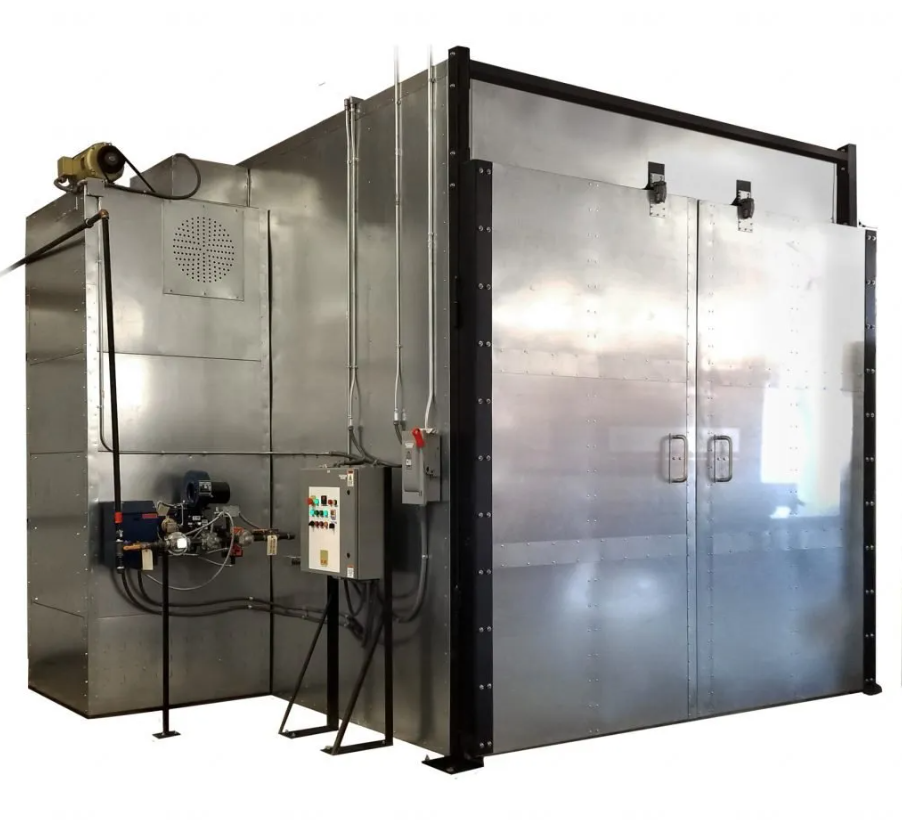
Safety Compliance Tips Every Powder Coating Machine Owner Should Follow
- Business
- July 15, 2025
- No Comment
Running a powder coating machine isn’t just about flawless finishes and color accuracy, it’s also about keeping the entire system safe and stable day after day. That means attention to more than just output. These overlooked safety details can make a massive difference in machine performance, operator well-being, and long-term reliability.
Contents
- 1 Scheduled Exhaust System Checks to Prevent Combustion Risks
- 2 Calibration of Temperature Sensors for Consistent Heat Management
- 3 Combustible Dust Management Protocols to Minimize Hazards
- 4 Emergency Shutdown Procedures for Rapid Response Preparedness
- 5 Clear Operator Access Zones for Enhanced Equipment Safety
- 6 Regular Inspection of Thermal Insulation Integrity
- 7 Compliance Verification of Burner Systems and Fuel Lines
Scheduled Exhaust System Checks to Prevent Combustion Risks
The exhaust system does more than just vent air, it plays a major role in keeping flammable particles out of places they shouldn’t be. Over time, buildup in exhaust pathways can restrict airflow and trap combustible residue, which increases the risk of internal ignition. That’s why routine exhaust inspections and cleanings are non-negotiable. Even a small blockage can turn into a dangerous situation if it’s left unchecked during operation.
Establishing a consistent schedule for examining ductwork and fans ensures air moves efficiently while carrying away excess heat and fine powder particles. It’s smart to check fan belts, motor bearings, and airflow sensors while you’re at it. This preventive effort can help extend the lifespan of your powder coating machine and ensure it stays compliant with fire safety standards.
Calibration of Temperature Sensors for Consistent Heat Management
Heat control is the backbone of any powder coating process. Without accurate sensors, the entire job can fall apart, causing uneven curing or worse, creating a fire hazard due to overheating. Periodic calibration of temperature sensors makes sure the readings on the screen reflect what’s actually happening inside the system.
Calibrating your sensors doesn’t just keep coatings smooth and reliable, it also supports consistent safety. Out-of-tune sensors may underreport rising temperatures, leading to structural damage or electrical strain on components. Schedule regular reviews of thermocouples, limit switches, and control units to avoid surprises and ensure your powder coating machine stays within operational specs.
Combustible Dust Management Protocols to Minimize Hazards
Powder coating materials may seem light and harmless, but once they become airborne and settle, they can form highly combustible layers. This type of dust, especially in confined or high-heat areas, poses serious risks. Establishing a cleanup protocol with vacuums rated for fine particulate is one way to control it. Sweeping isn’t enough, brushing particles into the air just spreads the hazard.
Dust collection systems that work in sync with the powder coating machine help reduce this buildup at the source. Operators should routinely inspect hidden ledges, overhead rafters, and other collection points where dust might gather unnoticed. Keeping these areas clean is just as important as maintaining the equipment itself, and should be part of every safety checklist.
Emergency Shutdown Procedures for Rapid Response Preparedness
Emergency stops aren’t something you want to figure out in the moment. Each powder coating machine should have a documented, practiced shutdown procedure that operators can follow instinctively. From cutting power to ventilating the area, the process should be fast, clear, and foolproof.
Training staff on how to handle overheating, system errors, or unexpected electrical events adds a layer of protection that technology alone can’t provide. Mark shutdown switches clearly and conduct quarterly drills so that reactions become second nature. A good system is only as safe as the people running it, and their confidence in emergency handling is a major factor in accident prevention.
Clear Operator Access Zones for Enhanced Equipment Safety
Accidents often happen because people step into places they shouldn’t. Ensuring that clear access zones around your powder coating machine are well-marked and unobstructed helps reduce the chance of tripping, pinching, or mechanical interference. Physical barriers, floor markings, and visual indicators create safer spaces for everyone involved.
It’s also wise to limit access to qualified personnel only. While the machine might seem easy to use, unexpected startup sequences or heat surges can put bystanders at risk. Establishing safety zones and enforcing operator-only rules help maintain a more controlled environment with fewer variables to manage.
Regular Inspection of Thermal Insulation Integrity
Thermal insulation plays a critical role in containing and controlling heat. Over time, insulation can degrade, especially under constant temperature shifts, exposure to fine powders, and physical wear. This degradation can lead to uneven heat distribution and wasted energy, but it can also compromise safety by letting heat escape where it shouldn’t.
Check insulation panels, seals, and gaskets regularly for cracks, shrinkage, or exposed areas. Replace worn material before it leads to more serious breakdowns. Keeping your powder coating machine’s thermal layers intact supports both operational consistency and workplace safety.
Compliance Verification of Burner Systems and Fuel Lines
The burner system is one of the most sensitive areas in any heat-based equipment setup. Fuel lines, valves, and combustion chambers must be inspected regularly to verify they’re functioning safely and efficiently. Even small leaks or faulty ignition points can cause a major hazard especially when paired with combustible powders.
Check that all burner safety interlocks are active and functioning. Fuel connections should be tight, regulators properly set, and gas lines free of wear. These components don’t fail often, but they should still be part of your routine inspection to stay aligned with industry safety expectations. Keeping the burner system in top shape ensures your powder coating machine delivers heat precisely and safely.

